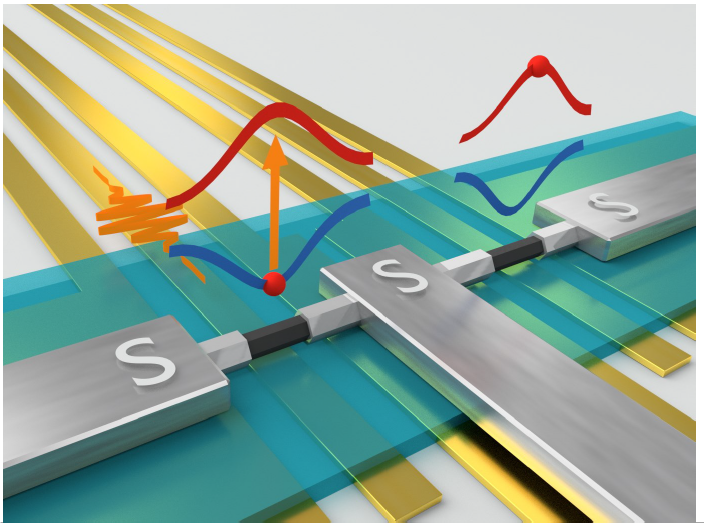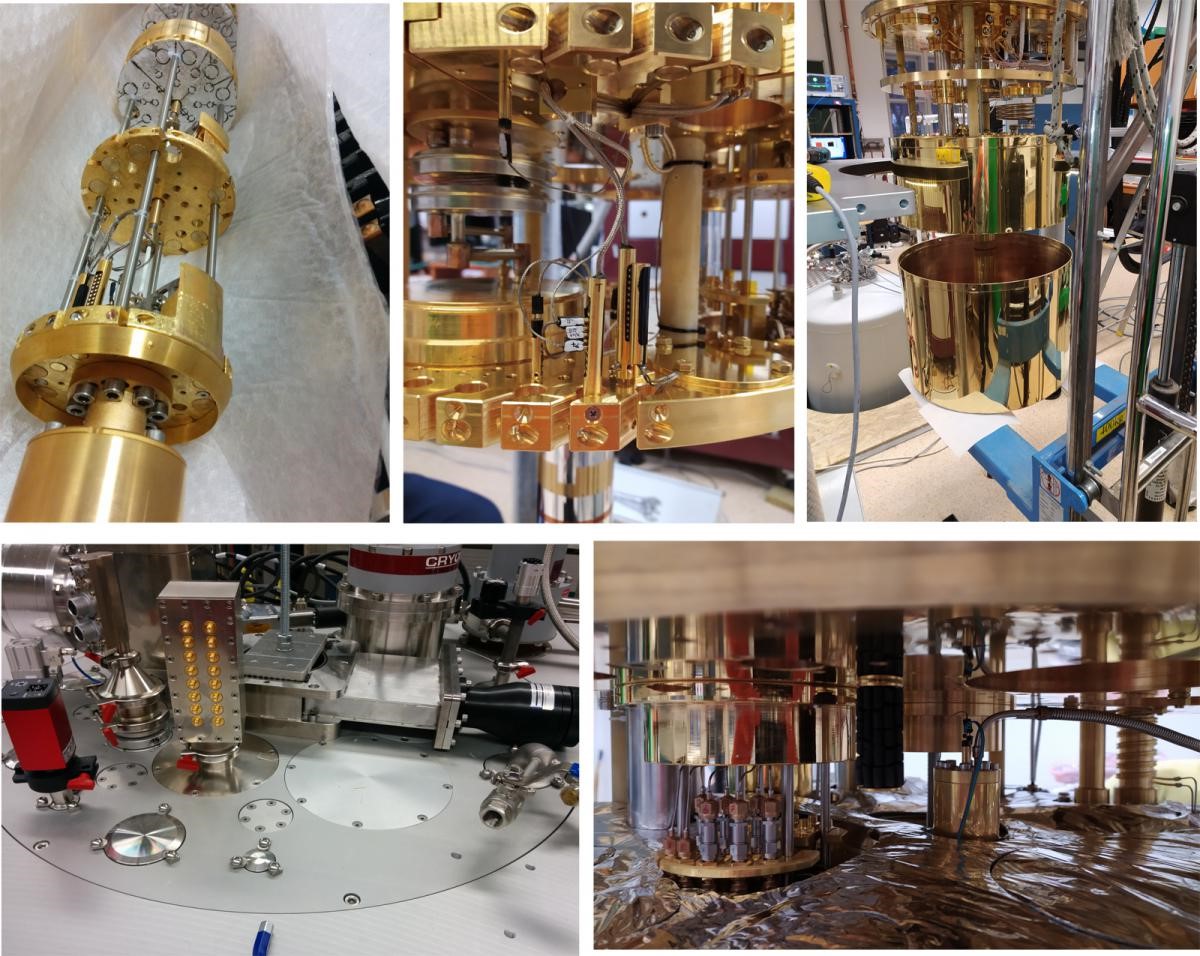A newest direction in our laboratory is to investigate nanocircuits using reflectometry techniques. One of the techniques rely on few 100 MHz tank circuits coupled to the nanodevices. Here by measuring the RF response of the circuit (frequency shift, broadening, etc) the properties of the nanocircuits can be obtained. We plan to use this technique to investigate Andreev molecules (two quantum dots hybridized by superconducting coupling), as investigated by us theoretically before. These techniques can allow fast measurements and can be sensitive to internal charge dynamics that are not addressable in DC transport.
In another direction we couple SC GHz resonators to nanocircuits to investigate the properties of nanocircuits. This includes measuring quantum capacitance in nanodevices (using capacitive coupling) or superconducting current phase-relation (using inductive coupling). The high quality factor of the resonators allow a sensitive readout.
 |
| Artistic view of two coupled Andreev qubits |
A newest direction in our laboratory is to investigate nanocircuits using reflectometry techniques. One of the techniques rely on few 100 MHz tank circuits coupled to the nanodevices. Here by measuring the RF response of the circuit (frequency shift, broadening, etc) the properties of the nanocircuits can be obtained. We plan to use this technique to investigate Andreev molecules (two quantum dots hybridized by superconducting coupling), as investigated by us theoretically before. These techniques can allow fast measurements and can be sensitive to internal charge dynamics that are not addressable in DC transport.
In another direction we couple SC GHz resonators to nanocircuits to investigate the properties of nanocircuits. This includes measuring quantum capacitance in nanodevices (using capacitive coupling) or superconducting current phase-relation (using inductive coupling). The high quality factor of the resonators allow a sensitive readout.
 |
| Top row: Quarter wave NbTiN superconducting resonator and corresponding resonance curves. Bottom row: Sample holder piece for transmission measurements with a superconducting resonator placed in the middle. The right panel shows a zoom in of the resonator. |
Finally, these circuits form the basis of superconducting qubit devices. Our plan is to study Andreev qubits, where the information is stored in the Andreev levels of a superconducting weak link.
Our new fridge dedicated to high frequency measurements has recently arrived, so measurements will start soon!
 |
| New Leiden dilution refrigerator dedicated to high frequency measurements. |

